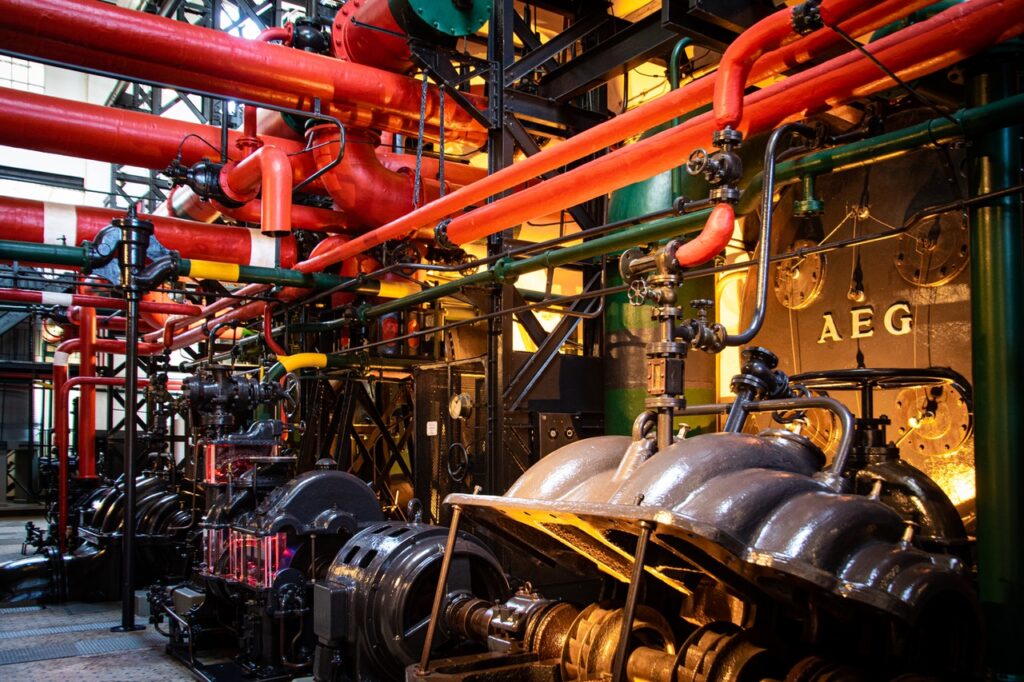Last Updated on 17-Apr-2024 by Charles Maxwell

Are you faced with estimating capital and operating costs? I know I often am. A key to this work is using cost indices. Unfortunately, accessing the best estimating data can be expensive. Often it costs thousands of dollars. This article discusses the easiest to access free sources.
Bureau of Labor Statistics (BLS)
The United States Bureau of Labor Statistics compiles the following statistics pertaining to cost estimating:
- Inflation and prices – consumer and producer prices
- Labor compensation – wages and benefits
- Productivity
- International prices and labor comparisons
The Producer Price indices and the Labor Compensation rates are useful for adjusting engineering and business estimates. You can find the data at: https://www.bls.gov/data/.
The BLS Handbook of Methods is helpful understanding and accessing the data.
Producer Prices Indices (PPI)
Producer Price indices measure changes in prices received by producers of most products and services generated by the US economy. It may take some exploring to find the indices that best suit your purpose—being that the BLS has compiled more than 8,000 Producer Price indices—but your patience will be rewarded by finding representative data. And the price is right—free. Go to: https://www.bls.gov/data/, and under the major heading “Inflation & Prices,” select either “Industry Data” or “Commodity Data” by clicking on the green icon.
From the popup data retrieval wizard, select an Industry and a Product.
Chapter 14 of the BLS Handbook of Methods explains the Producer Price indices.
Labor Costs
The BLS compiles much useful information on labor costs. You also can find this on the data page: https://www.bls.gov/data/, under the major heading “Pay & Benefits.” There select “Employer Cost for Employee Compensation Total Compensation” by clicking on the green icon.
From the popup data retrieval wizard, select the Ownership, Compensation Component, and Occupation. The Compensation Component “01 Total compensation” is good if you are estimating total labor costs for a project.
Chapter 8 of the BLS Handbook of Methods provides more information on the labor compensation statistics.
Chapter 12 of the BLS Handbook of Methods provides information on non-US labor compensation statistics.
Consumer Price Index (CPI)
The BLS compiles the often reported Consumer Price Index. The home page is at: https://www.bls.gov/cpi/. The CPI is a measure of what it costs for an average person to live in the United States. The CPI generally is not used for engineering estimates. The various PPIs, labor cost indices, and productivity indices better represent industrial costs.
RSMeans
RSMeans is a leading North American source of construction cost information. RSMeans was a pioneer in developing localized cost information for the US and Canada. RSMeans is owned by Gordon, which in turn is owned by Fortive Corporation.
Below are annual indices for 2000-2023. Historical and current values used to be freely available at: www.rsmeansonline.com/references/unit/refpdf/hci.pdf, but the link was dead as of 14 Jul 2021. Nevertheless, as of 26 Jan 2023, you could find a copy archived 2020 at: https://web.archive.org/web/20201111162743/www.rsmeansonline.com/references/unit/refpdf/hci.pdf. In addition, Archive.org has earlier copies going back to 2015, which contain values for the years back to 1964. Recent values (for 2020-2024) come from https://www.rsmeans.com/landing-pages/2020-rsmeans-cost-index, https://www.rsmeans.com/landing-pages/2021-rsmeans-cost-index, https://www.rsmeans.com/landing-pages/2022-rsmeans-cost-index, https://www.rsmeans.com/landing-pages/2023-rsmeans-cost-index, https://rsmeans.com/landing-pages/2024-rsmeans-cost-index
and from similar pages archived at Archive.org.
| Year | Index |
|---|---|
| 2024 Jan | 295.6 |
| 2023 Oct | 295.4 |
| 2023 Jul | 293.7 |
| 2023 Apr | 294.8 |
| 2023 Jan | 299.4 |
| 2022 Oct | 298.8 |
| 2022 Jul | 297.1 |
| 2022 Apr | 289.4 |
| 2022 Jan | 276.9 |
| 2021 Oct | 266.6 |
| 2021 Jul | 257.5 |
| 2021 Apr | 241.7 |
| 2021 Jan | 238.3 |
| 2020 Oct | 235.5 |
| 2020 Jul | 234.6 |
| 2020 Apr | 235.6 |
| 2020 Jan | 239.1 |
| 2019 Jul | 232.2 |
| 2018 Jul | 222.9 |
| 2017 Jul | 213.6 |
| 2016 Jul | 207.3 |
| 2015 Jul | 206.2 |
| 2014 Jul | 204.9 |
| 2013 Jul | 201.2 |
| 2012 Jul | 194.6 |
| 2011 Jul | 191.2 |
| 2010 Jul | 183.5 |
| 2009 Jul | 180.1 |
| 2008 Jul | 180.4 |
| 2007 Jul | 169.4 |
| 2006 Jul | 162.0 |
| 2005 Jul | 151.6 |
| 2004 Jul | 143.7 |
| 2003 Jul | 132.0 |
| 2002 Jul | 128.7 |
| 2001 Jul | 125.1 |
| 2000 Jul | 120.9 |
| 1993 Jan | 100.0 |
Detailed information is by subscription, with datasets annually costing $700-$4,000 each.
Engineering and News Record (ENR)
The Engineering and News Record (ENR), a popular construction magazine, maintains three widely-used cost indices. These include:
- Construction Cost Index (CCI)
- Building Cost Index (CCI)
- Materials Cost Index (MCI)
The MCI consists of the price for 2,500 pounds of fabricated structural steel, 1.128 short tons of Portland cement, and 1,088 board feet of 2×4 lumber. The CCI and BCI include both labor and material costs from the Material Cost Index. For labor, the CCI uses 200 hours of common labor, while the BCI uses 68.38 hours of skilled labor averaged from three trades—bricklayers, carpenters, and ironworkers.
Data, prepared for 20 US metropolitan regions, are only available by subscription to the magazine. The subscription cost varies by country of origin, delivery means, and length of subscription, but typical is more than $100 per year. ENR is owned by BNP Media.
Chemical Engineering Plant Cost Index (CEPCI)
Chemical Engineering magazine publishes the Chemical Engineering Plant Cost Index, which is widely used to quickly evaluate equipment and plant costs for the chemical and process industries. As of 2002, the index consisted of the weighted average of 41 PPIs (industry and commodity indices) and 12 labor cost indices, all reported by the BLS. Major categories of the CEPCI and their weighting as of 2002 included:
| Category as of 2002 | % |
|---|---|
| Heat exchangers and tanks | 17.1% |
| Process machinery | 6.5% |
| Pipes, values, fittings | 9.6% |
| Process instruments | 5.3% |
| Pumps and compressors | 3.2% |
| Electrical equipment | 3.5% |
| Structural supports and misc. | 5.3% |
| Construction labor | 29.0% |
| Engineering and supervision | 15.8% |
| Buildings (materials and contractors) | 4.6% |
| Total | 100.0% |
You can find a lengthy article on the makeup of the CEPCI by William M. Vatavuk, “Updating the CE Plant Cost Index,” which appeared in Chemical Engineering in January 2002 (page 62-70) at: https://www.chemengonline.com/Assets/File/CEPCI_2002.pdf
The magazine editors reported in 2022 issues of the publication that “Starting in April 2007, several data series for labor and compressors were converted to accommodate series IDs discontinued by the U.S. Bureau of Labor Statistics (BLS),” and “Starting in March 2018, the data series for chemical industry special machinery was replaced because the series was discontinued by BLS (see Chem. Eng., April 2018, p. 76-77).”
Web access to the CEPCI is a pricey $699.00 per year (as of April 2022). However, many professionals can qualify for a free subscription to Chemical Engineering magazine. The index is published monthly with indices being 3 months behind the publication date.
Cost professionals recommend only using the index back 5 years due to changes in technology, construction practices, labor efficiency, and formulation of the index. The following table shows values for the last 20 years.
CEPCI 2001 to Present
| Year | CEPCI |
|---|---|
| 2024 Jan Prlm | 795.1 |
| 2023 Dec | 789.6 |
| 2023 Nov | 789.2 |
| 2023 Oct | 790.7 |
| 2023 Sep | 793.3 |
| 2023 Aug | 798.7 |
| 2023 Jul | 798.7 |
| 2023 Jun | 803.3 |
| 2023 May | 808.8 |
| 2023 Apr | 803.3 |
| 2023 Mar | 799.1 |
| 2023 Feb | 798.0 |
| 2023 Jan | 802.6 |
| 2022 Dec | 802.9 |
| 2022 Nov | 814.6 |
| 2022 Oct | 816.2 |
| 2022 Sep | 821.3 |
| 2022 Aug | 824.5 |
| 2022 Jul | 829.8 |
| 2022 Jun | 832.6 |
| 2022 May | 831.1 |
| 2022 Apr | 816.3 |
| 2022 Mar | 803.6 |
| 2022 Feb | 801.3 |
| 2022 Jan | 797.6 |
| 2021 Dec | 776.3 |
| 2021 Nov | 773.1 |
| 2021 Oct | 761.4 |
| 2021 Sep | 754.0 |
| 2021 Aug | 735.2 |
| 2021 Jul | 720.2 |
| 2021 Jun | 701.4 |
| 2021 May | 686.7 |
| 2021 Apr | 677.1 |
| 2022 | 816.0 |
| 2021 | 708.8 |
| 2020 | 596.2 |
| 2019 | 607.5 |
| 2018 | 603.1 |
| 2017 | 567.5 |
| 2016 | 541.7 |
| 2015 | 556.8 |
| 2014 | 576.1 |
| 2013 | 567.3 |
| 2012 | 584.6 |
| 2011 | 585.7 |
| 2010 | 550.8 |
| 2009 | 521.9 |
| 2008 | 575.4 |
| 2007 | 525.4 |
| 2006 | 499.6 |
| 2005 | 468.2 |
| 2004 | 444.2 |
| 2003 | 402.0 |
| 2002 | 395.6 |
| 2001 | 394.3 |
| 1957-1959 | 100.0 |
Marshall & Swift (M&S)
Another source of cost data—which once was popular for industry, but today is focused on commercial and residential real estate building data—is Marshall & Swift. Marshall & Swift is owned by CoreLogic.
Summary
Cost indices are an essential engineering tool. The basic RSMeans and CEPCI indices are useful tools for developing quick, scoping estimates. BLS indices are helpful for estimating capital and operating costs. More detailed cost estimates require detailed estimating techniques and subscription to expensive cost databases, such as those provided by RSMeans.
Photo Credit
Mechanical equipment, photographer Magda Ehlers, Pexels, 2569839.
